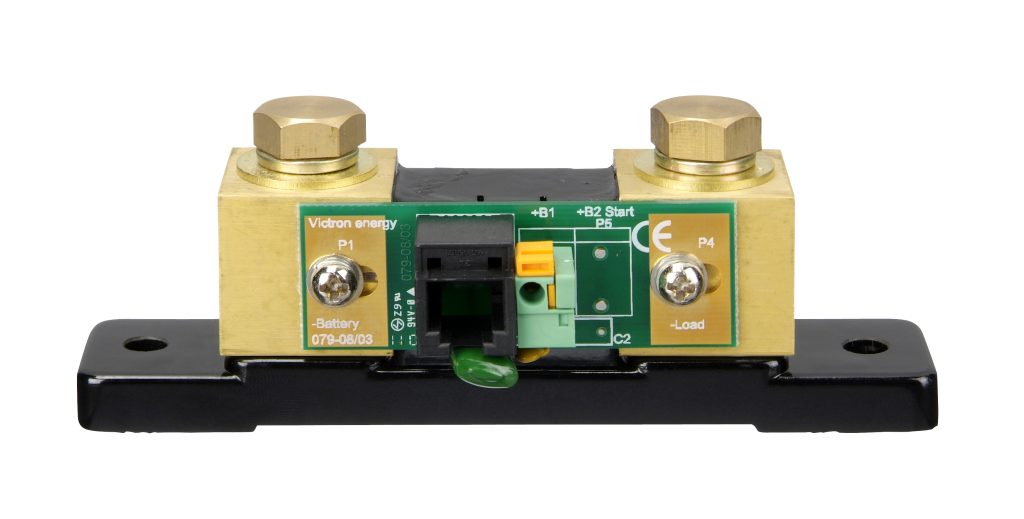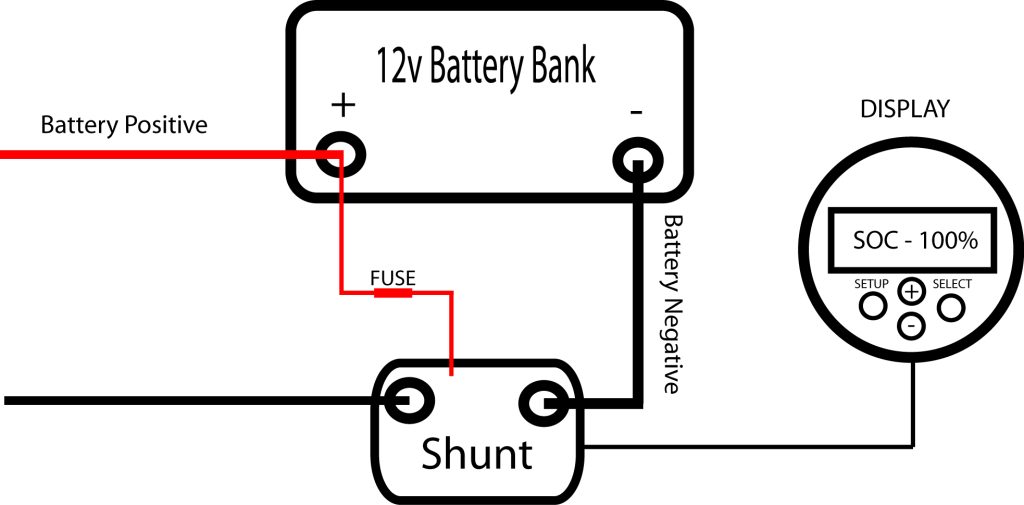Our Battery Monitor
I have installed a Victron Energy BMV-712 Smart battery monitor, but there are many other options from other manufacturers, see the listing at the end of this article.
I selected this one as it gave me the opportunity to connect to my onboard Raspberry Pi which I am using to give some smart boat features and provide live location tracking for my website in the future.

The battery monitor comes in two parts, a display which provides a readout of the battery status and a means of programming/setting up the system for your configuration.
The Shunt

The second part is called a shunt, this needs to be placed, in our case, on the negative side of the battery bank, so that everything must pass through it to reach the battery, there should be no other connections to the negative side of the batteries else your measurements will never be accurate.
A shunt is a resistor of very low but known value that is placed in parallel with a voltmeter so that all the current being measured flows through it. The voltage drop across the shunt’s resistor is measured; this voltage drop across the shunt is proportional to the current flowing and can then be calculated using Ohms law (Current = Volts / Resistance).
Shunts are rated for the maximum current they can measure, in our case 500A which at 12V is 6000W, more than enough for our boat.

The battery monitor also has an extra cable that connects to the positive side of the battery bank to power the electronics and the display, but also to measure the current battery voltage, we have an extra wire connected to the starter battery, so we can monitor its voltage as well.
Peukert’s Law
To then calculate the remaining capacity of the battery, the monitor uses an adaptation of Peukert’s Law** which can be used to calculate the capacity of lead acid batteries at different rates of discharge. As we discussed earlier, the discharge rates affect the battery capacity.
| ** Developed by Wilhelm Peukert (1855-1932) Peukert’s law is used to calculate the batteries deliverable capacity at the current given rate of discharge, His law describes the batteries capacity at a constant discharge until it reaches its cut off voltage, below which you can damage your battery, this constant is called ‘K’, for example K=1.25 is used for our flooded lead acid batteries. There are however some limitations to this law as it does not consider the batteries temperature or age. I expect each monitor manufacturer modifies this to consider these extra factors when displaying the results, our system records each battery charge/discharge cycle. |
The capacity of a battery falls at higher rates of discharge because the chemical reaction within the battery reaches its maximum speed for the given plate size and therefore the voltage drops. If left to recover, that missing capacity will return.
Using these calculations, a battery monitor can calculate the available power remaining while the battery is in use (under load) and as that load changes or even as the battery is charging, it can display the current State of Charge (SOC).
Now you know what is happening?
Armed with this information, you can then decide how you want to operate your boat and if you will need to start the engine to charge the batteries. One of our future projects is to work out the size we need for some solar panels, and we will use the data from the battery monitor to help calculate the size system we need, but that is a topic for another day
Battery Monitors Suppliers
Victron – www.victron.com
NASA Marine Instruments – www.nasamarine.com
Advanced Yacht Systems – www.advanceyacht.co.uk
Simarine – simarine.net/
Votronic – www.votronic.de

